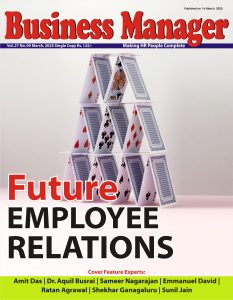It is well-known that most organizations do not meet their talent acquisition and retention goals despite increasing employee incentives and larger recruiting spend. This leads to an incorrect conclusion that a skills gap in the market is the root cause of this. While a skills gap and talent does play a big role, it is notthe entire reason. We need to take a deeper dive into the current hiring practices and assess them in relation to key drivers and ground realities of digital transformation talent needs to understand the root causes and formulate winning strategies.
Organizations built up hiring practices over multiple decades with minor improvements over time. While the changes implemented are good and a step in the right direction, more is needed. It is time for organizations to completely reimagine their hiring practices in alignment with realities of the post-COVID modern delivery world.
It is important to look at the key trends in the market, the challenges faced by recruiters, and to identify their root causes. To address these challenges, we will lay out a set of core principles to abide by and propose a set of recommendations based on these principles.
Also Read: Securing Remote Workforce
Key Drivers-Several key trends in the current market are driving significant changes and disruption to the traditional hiring practices and rendering them obsolete.
- Sudden demand spike According to a Gartner Board of Directors survey,2 69% say COVID-19 prompted their organization to accelerate digital transformation initiatives, and 66% say digital tech initiatives are a top strategic business priority. Companies have accelerated their digital transformation initiatives by several years. This sudden shift in priorities resulted in an unprecedented demand spike for talent that is skilled to execute digital transformation initiatives.
- Rapid Innovation According to a Gartner HR Research survey,3 58% of the workforce needs new skills to get their job done, and the total number of skills required for a single job has increased by 10% year over year since 2017. With the advent of cloud computing and machine learning, the pace of innovation was already breathtaking prior to COVID-19.
- Remote work flexibility According to a 2021 Work Trend Index Annual Report from Microsoft,4 73% of employees want flexible remote work options to continue in their work. The pandemic forcedorganizations to adopt a full-time remote work model with short notice. While there were initial hiccups, both employers and employees adapted to it and saw higher productivity and lower operating costs as a result.
- Work-life balance According to the ‘Future of Time’ report from Adobe,5 almost half of enterprise workers say they now work longer hours. While remote work brought in the much-needed flexibility, it blurred the line between work and home resulting in extreme burnout particularly in tech workers most essential for digital transformation initiatives.
- Diversity, Equity, and Inclusion Organizations across the globe now view diversity, equity, and inclusion as a key priority with demands coming from employees, customers, and investors. According to a recent PwC survey,6 organizations are investing at unprecedented rates in D&I programs and 75% of respondents say it is a value or priority.
Primary Challenges
While there are unprecedented demands on organizations to acquire new talent that is diverse and well equipped to execute on digital transformation initiatives, the ground reality is much worse. Organizations are not even able to retain their existing talent. The ongoing trend of The Great Resignation is resulting in an alarming number of resignations. A record 20 million US workers resigned between April and August 2021 and another record 3% or 4.4 million workers quit their jobs in September 2021.
- Unable to find enough qualified candidates Regardless of how hard the recruiting teams try, they cannot find enough qualified candidates to fill open roles. Currently, there are several million more job openings in the U.S. than there are job seekers. This situation is much worse for in-demand tech skills necessary for digital transformation initiatives.
- High compensation demands. The budgets laid out by organizations to hire tech talent are way out of line with demands from the job seekers. We are observing that junior engineers are being offered mid-level engineer salaries and mid-level engineers would have to be paid senior engineer or architect level salaries to attract them.
- Lengthy hiring process Traditionally, hiring a new candidate has been four-to-16- week process based on existing hiring practices involving multiple rounds of interviews and consensus building among the team. This process is too long in the current market conditions. By the time an offer is made, the candidate has already accepted another offer and it is unlikely that the candidate will still be looking for a job beyond four to six weeks.
- Offers being rejected We are observing a high rejection rate among the candidates after going through the lengthy interview process and offer being made.
- Expectation mismatch for new employees After going through the lengthy hiring and onboarding process, employers realize the new joiners are not as productive as expected or are leaving the organization within three months of joining because employers do not meet employee expectations. This results in a significant wastage of hiring budgets, opportunity cost, and lost productivity for the entire team.
Five core principles businesses need to adopt to succeed in Talent acquisition
- Provide flexible work arrangements Adopt a remote-first model combined with the concept of distributed office space. Employees should have the flexibility to work from home, the office, or a shared workspace at a satellite office. The focus should be on work contribution and outcomes rather than a fixed eight-hours-a-day schedule.
- Seek a distributed workforce Do not restrict employees to a specific geographical location or even a specific country, if possible. There are several talent hotspots in the world that focus on a specific talent or tech skill. Expanding to a distributed and global workforce, if possible, significantly improves the available talent pool.
- Go beyond standard monetary compensation While salary is important, employees are looking for additional benefits. Offering part-time flexibility, stock-based compensation, multi-year sign-on bonuses, deferred compensation plans, meaningful paternity/maternity benefits, and pet-related benefits go a long way in attracting and retaining a variety of talent.
- Focus on upskilling and growing talent within the organization Current employees have valuable institutional knowledge and can be upskilled to be valuable members of modern delivery teams with the right amount of investment in skills development. This is a pool of readily available staff with known strengths and qualities.
- Provide meaningful work, career progression and overall employee experience Employment experience starts from the time of creating the job description and continues throughout the employment period and into the alumni network. It is important to recognize that organizations are evaluated by candidates during the hiring process and employees are brand ambassadors of the organization to source and retain future talent.
Conclusion-The world is changing rapidly, and pace of change is accelerating driven by advances in cloud computing, artificial intelligence, and blockchain technologies. Post-COVID-19, the world is facing a whole different set of realities with businesses being disrupted at an accelerated pace and having to reinvent themselves in a short timeframe and continue doing so to stay relevant. All of this means executing and delivering on digital transformation initiatives at an accelerated pace. The key ingredient necessary for successfully executing on digital transformation initiatives is access to the right talent that can deliver the technological changes required by these initiatives.The urgency to execute digital transformation has increased postCOVID-19, creating an immense shortage for necessary talent. At the same time, the way we work has completely changed post-COVID-19 with remote work and a distributed workforce leaving organizations scrambling to adopt to it and deliver on the necessary change initiatives. While it seems like a daunting task to acquire necessary talent, it can be accomplished by understanding the key drivers and adopting a set of core principles and strategies laid out in this whitepaper






















Add comment